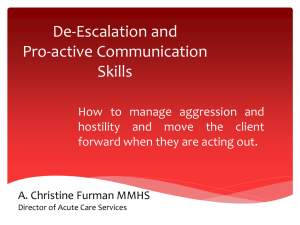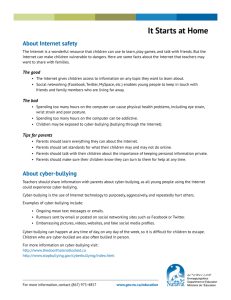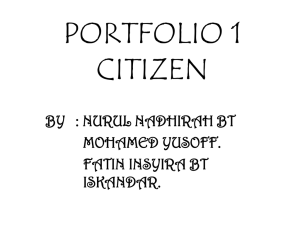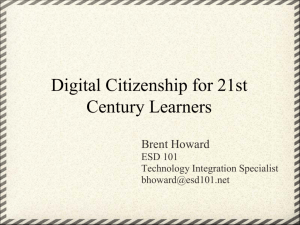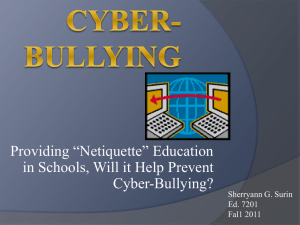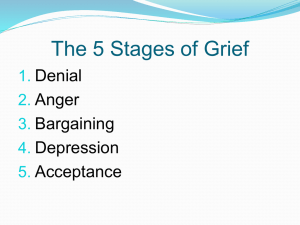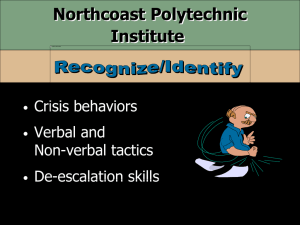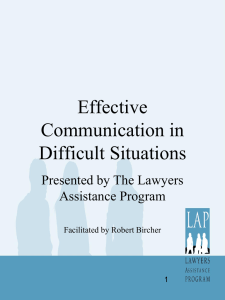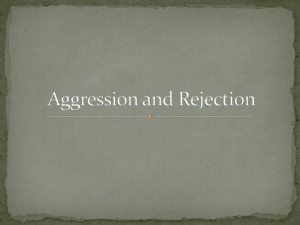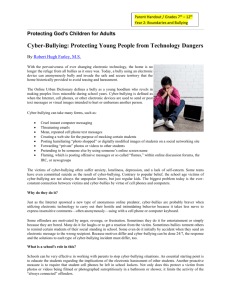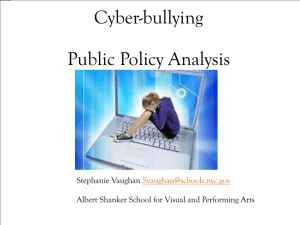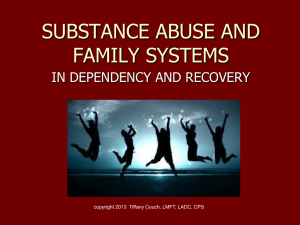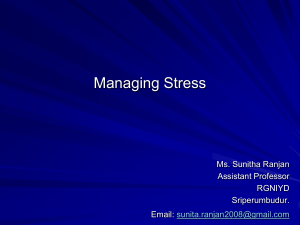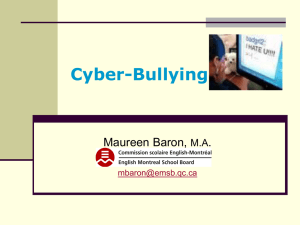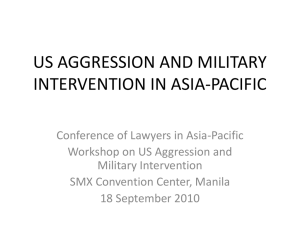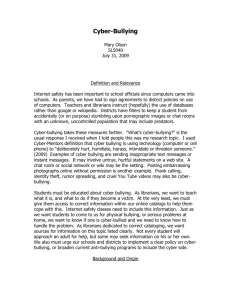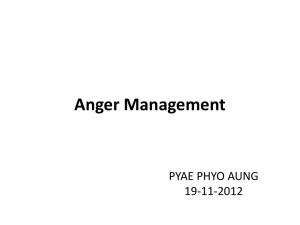m3-ppt - Let Me Be Me
advertisement
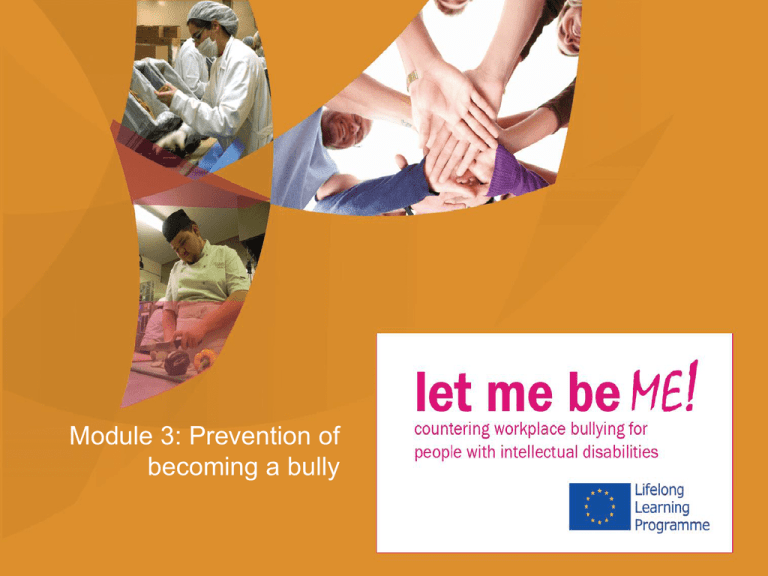
Module 3: Prevention of becoming a bully Learning outcomes of Module 3 1) Learning to empathise with others 2) Learning how to reduce and control anger and aggression 3) Learning how to develop social skills 4) Learning possible consequences of cyber-bullying 3.1 Raising of empathy Activity 1: Characteristics of feelings Activity 2: Exclusion Activity 3: Dear Diary Summary: raising of empathy Try to identify the feelings of the other person. Keep these feelings in mind when you are with them. Try to see things from others’ perspective. Show understanding for others’ perspective. Don’t try to get your way at any costs. Show interest in the other person. Listen to the other person (eyecontact, showing that you are listening). Evaluation: 3.1 Raising of empathy 3.2 Reduction of anger and aggression Activity 1: Characteristics of anger and aggression Summary: characteristics of anger and aggression Changes of the body: Hands: moist palms, shaking, clenched into a fist Stomach: pressure, feeling of sickness Breathing: faster or heavily, hard to breathe Chest: pressure, narrowness, stitching Throat: having a lump in the throat, dry throat Voice: trembling, hoarse, loud, shrill or becoming silent Eyes: seeing red, blurred vision, squinting Forehead: frowning, getting moist Head: pressure, dizziness, headache, sensation of heat, feeling like it’s going to explode Activity 2: Controlling of anger Summary: behaviour when feeling anger When you feel anger, try to calm yourself down: change location or leave the provoking situation choose your individual “Cool-Down-Sentence” (e.g. “stay calm”, “I can do this”) and repeat it distract yourself: do something you like, do physical exercises or think of positive experiences try to relax, do breathing exercises count to 10 Activity 3: Personal space Summary: personal space Each person has an individual personal space surrounding him/her like a bubble. It is needed for feeling comfortable and safe. If somebody enters the space, different feelings can occur: fear, but also anger or aggression. Keep this personal space in mind when meeting someone. Evaluation: 3.2 Reduction of aggression 3.3 Social skills training Activity 1: Hot chair Activity 2: Role play 1 Activity 3: Role play 2 Summary: social skills training Characteristics of self-confident behaviour: Posture: Stand tall, head held high, chin up, shoulders back, feet firmly on the ground. Make eye-contact with the other person. Thoughts: Encourage yourself with positive and realistic thoughts before entering a challenging situation! Tell yourself: “I can do this!” “I’m not afraid!” Expression: Use I-statements! Express your needs and feelings! Be precise and explicit and tell it with a loud and clear, calm voice. Evaluation: Social skills training 3.4 Effects of cyber bullying Activity 1: Discussion of video http://www.youtube.com/watch?v=bg xNItGmiC4 Activity 2: Discussion of video http://www.youtube.com/watch?v=ciZ KNARbkXY Activity 3: Legislation Summary: effects of cyber-bullying Consequences for the victim: reduced self-esteem feelings of frustration, anger, sadness, hopelessness, loneliness, depression sleeping problems, health problems suicidal thoughts and behaviours, self-harm Cyber-bullying may affect a person for a long time, long after the bullying stops. Summary: effects of cyber-bullying Legal consequences for the bully: Cyber-bullying is an offence. There are no specific cyber-bullying laws, but they are handled like insults, threats or stalking. Also, in some countries you can be fined for spreading of photos and videos. Evaluation: 3.4 Effects of cyber-bullying Evaluation: Module 3: Prevention of becoming a bully Evaluation activity: Mood barometer


